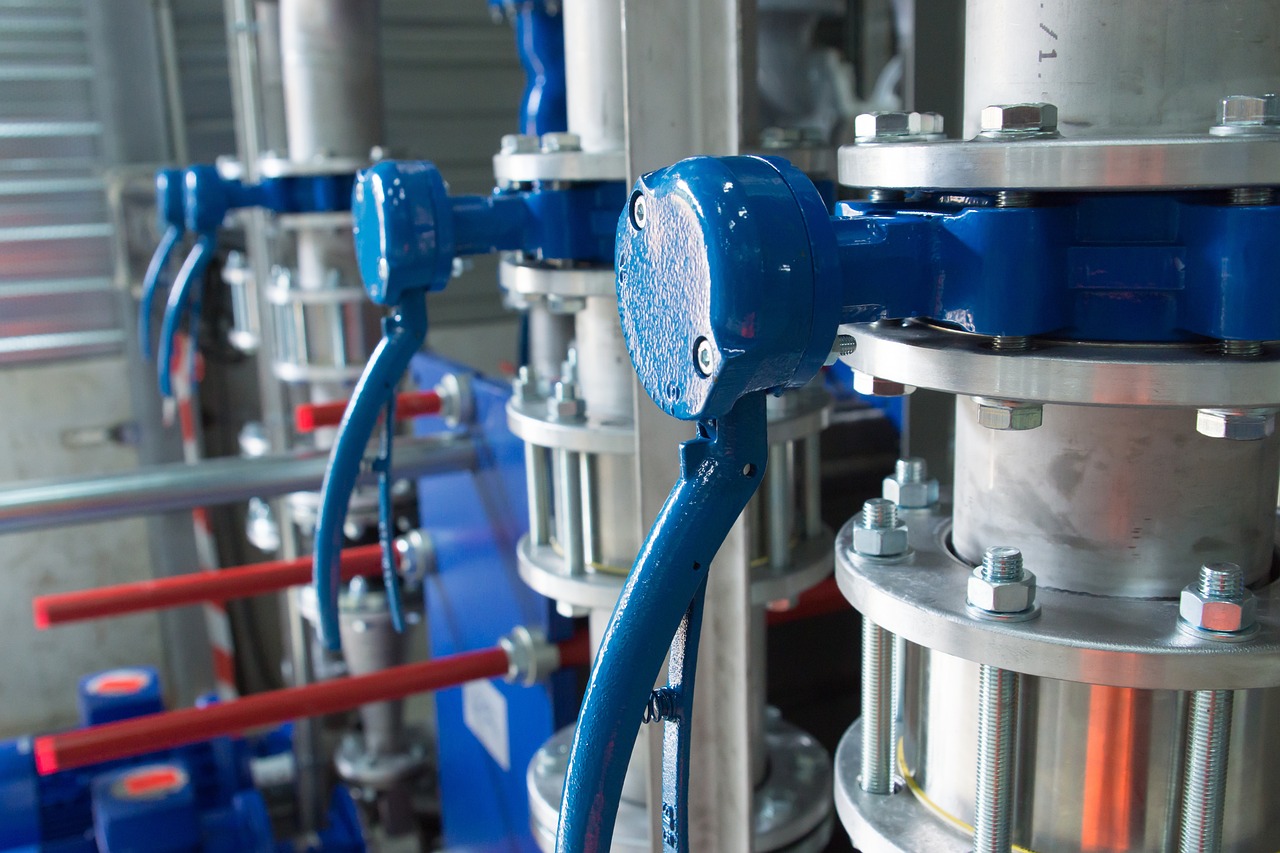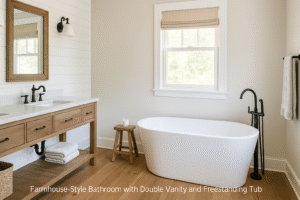Pipes are the lifeblood of buildings, vehicles, and industrial plants. Pipes need strong support to avoid cracks, leaks, or collapse. Pipe clamps solve this problem. These small parts hold pipes firmly, stop vibrations, and protect systems from damage.
You find pipe clamps everywhere. They hide behind walls, sit under floors, and hang from ceilings. They keep plumbing, construction, automotive, and industrial systems working without trouble. The right clamp makes a big difference. It decides whether a system stays strong or fails early.
You must know the types, materials, and features of pipe clamps to build a safe setup. This guide shares expert advice, simple tips, and proven ways to help you pick the best clamp every time.
What Are Pipe Clamps?
Pipe clamps are strong fastening tools. You use them to grip and support pipes against solid surfaces. They attach pipes to walls, ceilings, beams, or floors. Without clamps, pipes can move, sag, or break under pressure.
Clamps stop pipes from shifting when systems face vibrations, sudden pressure, or temperature changes. They hold pipes steady and prevent accidents or system failures. A good clamp keeps everything locked firmly in place.
Correct use of pipe clamps builds safe, stable systems. It protects pipes from early damage. It extends the life of plumbing, construction, and industrial networks. Every strong setup starts with strong pipe support.
Main Types of Pipe Clamps
Choosing the right clamp matters. The wrong choice can lead to weak support, leaks, or system failure. You must pick the clamp that matches the pipe’s size, weight, and position. Here are the most common types you should know:
Standard Pipe Clamps
Standard clamps look like metal loops. They use adjustable screws to grip pipes firmly. You see them in simple plumbing setups and indoor water lines.
U-Bolts
U-bolts are shaped like the letter U. They wrap around a pipe and bolt it tightly to flat surfaces. You often see them on vehicle frames, support beams, and heavy machinery.
Saddle Clamps
Saddle clamps offer a wide gripping area. They spread weight across a larger surface. You should use them when working with large, heavy pipes that need extra stability.
Riser Clamps
Riser clamps support pipes that run straight up or down. They carry the full weight of vertical pipes without putting stress on joints or fittings. Builders use them in tall buildings and industrial plants.
Split Ring Hangers
Split ring hangers grip pipes securely but also allow easy access. You often find them attached to ceilings. You can open them fast when you need to repair or replace a section of pipe.
Cushion Clamps
Cushion clamps include a soft rubber insert inside the metal ring. The rubber protects the pipe from vibration, noise, and damage. You see these often in HVAC systems and noisy mechanical setups.
Beam Clamps
Beam clamps connect pipes to beams without needing to drill holes. They hook securely onto the edge of a beam. You use them where a fast setup is needed or where drilling is not allowed.
Each clamp type solves a different challenge. Knowing which one to use helps you build stronger, safer systems that last longer.
Pro Tip: Always match the clamp to the system’s pressure rating and material type for best results.
Common Materials Used in Pipe Clamps
It is important to know that the material of the clamp affects strength, corrosion resistance, and lifespan:
- Carbon Steel: Strong and cost-effective. Ideal for industrial environments.
- Stainless Steel (304, 316): Highly corrosion-resistant. Suitable for food-grade, marine, and outdoor uses.
- Plastic or Nylon: Lightweight and chemical-resistant for sensitive systems.
- Copper: Works with copper piping in residential plumbing.
- Aluminum: Lightweight but strong. Common in HVAC and automotive industries.
Material standards often follow guidelines like ASTM F708 or DIN 3015 for load resistance and durability.
Pipe Clamp Sizes and Standards
Pipe clamps come in many sizes, from ¼ inch (6mm) up to 24 inches (600mm) or more. Always choose based on:
You must pick the correct clamp size if you want a strong and safe system. A wrong-sized clamp can cause pipes to slip, break, or leak. Here are the main factors you should check before choosing:
Pipe Outer Diameter (OD)
You must measure the pipe’s outer diameter first. The clamp must fit snugly around the outside of the pipe without squeezing it too hard or leaving too much space.
Wall Thickness
You should know the pipe’s wall thickness too. Pipes with thicker walls are heavier. They need stronger clamps that can handle extra weight without bending or snapping.
Operating Pressure
You must check how much pressure the pipe will carry. Pipes that handle high pressure push harder against clamps. You need clamps built to hold firm without slipping or cracking under stress.
Temperature Exposure
You should also think about the temperature. Hot pipes expand. Cold pipes shrink. If you ignore temperature changes, your clamps might loosen or snap over time. Some clamps are made to handle wide temperature swings without losing strength.
Why Manufacturer Charts and Industry Standards Matter
It is important to trust official charts and standards when picking clamp sizes. Manufacturers test and rate their clamps carefully. They show the safe load limits, pressure ratings, and size matches. Industry standards like ASTM, ISO, or DIN rules also guide you to safe choices.
You should always check these charts before buying. Guesswork can lead to dangerous mistakes.
Example Size Chart
| Pipe Size (inches) | Clamp Range (mm) | Recommended Type |
|---|---|---|
| ½” | 15–18mm | Standard Pipe Clamp |
| 1″ | 27–30mm | U-Bolt or Split Ring |
| 2″ | 52–55mm | Saddle Clamp |
| 4″ | 100–103mm | Riser Clamp |
Key Features You Should Look For
If you want the best results, you should check for these features:
You must choose clamps with the right features to build strong and reliable systems. A good clamp does more than just hold a pipe. It protects the pipe, supports the system, and saves you from future problems. Here are the features you should check:
Corrosion Resistance
You must pick clamps that resist corrosion if you work in outdoor or chemical environments. Rain, salt, chemicals, and moisture can eat away at weak materials. A corrosion-resistant clamp lasts longer and keeps pipes safe without extra maintenance.
Load Rating
You must check the clamp’s load rating before using it. A clamp must carry the full weight of the pipe and everything inside it. If the load is too much, the clamp can fail. You should always match the clamp’s rating to your system’s real needs.
Thermal Movement Allowance
Pipes expand and shrink when temperatures change. You must choose clamps that allow a little movement without breaking or losing grip. This matters most in places where pipes face hot and cold conditions. A good clamp absorbs movement and protects joints.
Noise and Vibration Control
Some systems create a lot of vibration and noise, especially in HVAC units and industrial machines. You must choose clamps with noise control features like rubber cushions. These clamps stop pipes from rattling and keep noise levels low.
Quick Installation Design
Time matters in every project. You should choose clamps that install quickly and easily. A simple design cuts labor costs and speeds up the work. Quick installation also lowers the chance of mistakes during setup.
Smart clamp choices save time, cut risks, and keep systems working safely for years.
High-quality clamps often meet UL, FM, or NSF standards, depending on the application.
How to Install Pipe Clamps Properly
You must install pipe clamps correctly to ensure stability.
- Measure the pipe OD and select the matching clamp size.
- Space clamps according to pipe material and system weight (typical spacing: every 6–8 feet).
- Mark drilling points clearly on support structures.
- Use approved anchors, bolts, or beam clamps.
- Fasten clamps securely, but do not overtighten to avoid damaging the pipe.
Checking alignment and movement allowance after installation is crucial for long-term success.
Common Mistakes You Must Avoid
- Choosing the wrong size clamps
- Ignoring environmental factors like moisture or chemicals
- Over-tightening that crushes pipes
- Poorly spaced clamps leading to pipe sagging
Industries That Rely on Pipe Clamps
Pipe clamps support critical operations in:
- Construction: Plumbing, drainage, fire protection piping
- Oil and Gas: Process piping and offshore pipelines
- Automotive: Exhaust systems and brake lines
- Manufacturing: Chemical processing, food production, mining plants
- Marine and Offshore: Shipbuilding and oil rigs
Every industry demands clamps built for its specific challenges.
Future Trends in Pipe Clamp Technology
It is important to know that pipe clamp technology is advancing fast:
- Smart Monitoring Sensors: Clamp-embedded sensors detect stress or leaks early.
- Recycled Materials: Eco-friendly clamp options for green building projects.
- Quick-Latch Designs: Faster install and removal systems.
- Advanced Rubber Padding: Better noise control and longer durability.
Future-ready clamps will deliver more safety, speed, and environmental responsibility.
Buying Tips: How to Choose the Best Pipe Clamp
- Always match clamp material to pipe material.
- Check environmental exposure (temperature, UV, saltwater).
- Verify load ratings with official data sheets.
- Prefer clamps with certifications for critical jobs (FM Approved, UL Listed).
It is smart to spend a little more for quality that saves huge repair costs later.
Final Thoughts
Pipe clamps are more than simple fasteners. They are critical safety tools for any piping system. Good clamp choices protect infrastructure, extend system life, and boost safety.
If you want pipes that stay strong and silent, you must select high-quality pipe clamps based on pipe size, environment, and load demands. Smart planning today means safer, cheaper systems tomorrow.
Always treat clamps as key parts of your success, not afterthoughts.
Frequently Asked Questions (FAQs)
Q1: Can I use the same clamp type for metal and plastic pipes?
Plastic pipes need softer grips and cushioning to avoid cracks.
Q2: How do I prevent pipe movement during thermal expansion?
Use thermal expansion clamps or include flexible joints.
Q3: How often should I inspect pipe clamps?
You should inspect clamps at least once a year in critical systems.
Q4: What is the best clamp material for outdoor use?
Stainless steel (grade 316) resists corrosion best outdoors.
Q5: What happens if I install clamps too far apart?
Pipes can sag, crack, or pull away from fittings, leading to costly failures.
Read Also: T.J. Maxx Rugs 5×7: The Best User Guide and Honest Review




